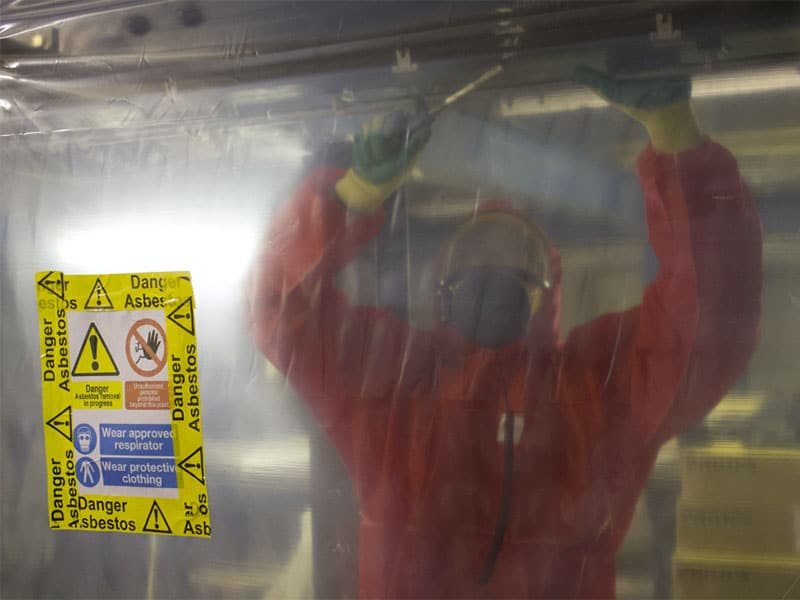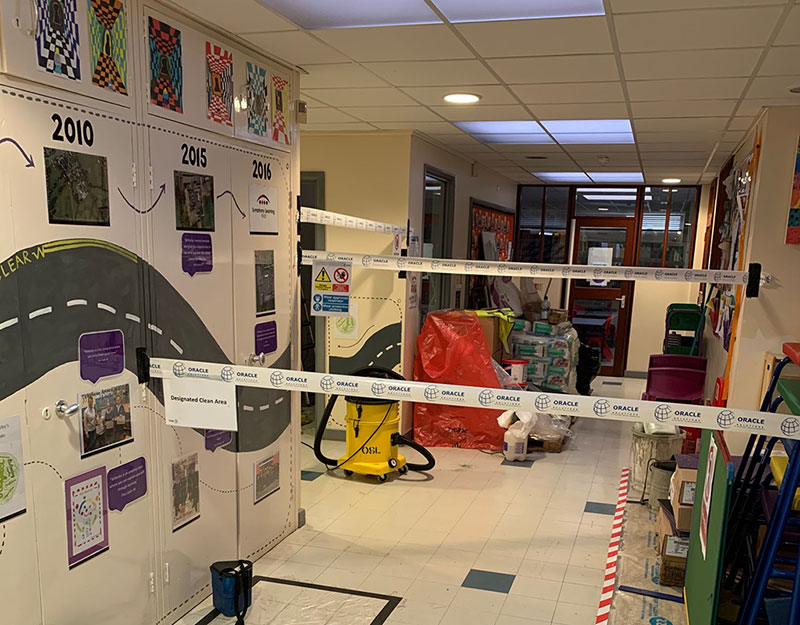Should parents be told about asbestos in their children’s school?
For much of the 20th century, asbestos was extremely widely used as a building material in the UK. The importation and use of the naturally occurring mineral in the UK was only banned in 1999, after years of ever-increasing awareness about the health risks the substance posed.
Today, the very word “asbestos” is synonymous with risk to health. Those who breathe in or ingest the substance can go on to develop often-fatal diseases affecting the lungs and other parts of the body, such as mesothelioma and asbestos-related lung cancer.
However, it is also true that many people in the 2020s now see asbestos as a relatively “historical” phenomenon, rather than something that can still present a new risk to human health. This is why it might surprise some parents to learn that most school and college buildings in the UK still contain asbestos, as the Department for Education (DfE) has previously confirmed.
So, should schools be giving parents more information about the situation with asbestos on their premises, than might currently be the case? Below, we have set out the legalities and practicalities on this subject that you may wish to be aware of.
Understanding the situation around asbestos in schools
While the DfE has indeed previously stated that “most school and college buildings contain asbestos”, how much is “most”? Estimates of this vary, but an All-Party Parliamentary Group on Occupational Safety and Health report has said that more than three quarters (75%) of state schools in Britain are believed to contain asbestos.
Given that many of the UK’s school buildings date from the time before asbestos was banned, such a high percentage should not arguably be such a great surprise.
Asbestos was formerly used in an extremely broad range of products that were once routinely used in the construction of schools and other buildings. These include the likes of asbestos lagging used as thermal insulation on pipes and boilers, as well as sprayed asbestos, asbestos-insulating board (AIB), textured coatings, floor tiles, and some ceiling tiles.
However, it is also important to take a “big picture” view of the situation with asbestos in UK schools. The material, where it remains present in UK school buildings, is often contained more deeply in the fabric of the given building than would present a significant risk to users of the premises, such as pupils and staff.
Furthermore, stringent rules now exist that compel those managing school buildings to take proactive steps to protect users of the premises from the risks of asbestos. The key piece of UK legislation in this regard is the Control of Asbestos Regulations 2012, or CAR 2012.
Does asbestos in schools pose a risk to children?
The good news for parents is that the mere fact of asbestos being present in their child’s school should not, by itself, be a cause for concern. The big question is whether the “dutyholder” – as outlined under CAR 2012 – is managing the asbestos properly. Or, to put it in the words of the DfE, “if managed actively and safely, the presence of asbestos in your school or college should not pose a risk to occupants.”
The situation can be very different, however, if the dutyholder is not managing any on-site asbestos to the required high standard. While asbestos that is in good condition and undisturbed is not believed to pose a significant risk to health, if the asbestos-containing materials (ACMs) in question are in poor condition and/or disturbed, they can release asbestos fibres into the air. It is this, latter situation that can lead to someone nearby accidentally breathing in or ingesting the substance.
Presuming that asbestos in a given school is being managed safely and responsibly in accordance with CAR 2012, there should be little reason for concern. ACMs that are sealed and undamaged will not release asbestos fibres, and dutyholders are required to take steps to help avoid the disturbance of asbestos on their school premises – as could otherwise happen, for example, during on-site construction, demolition, and/or refurbishment work.
The UK Health and Safety Executive (HSE) has said that, where it has carried out inspections of schools, it has discovered that most such institutions have good standards for managing asbestos on their premises.
The HSE has further stated that, in cases where asbestos is indeed well-managed on a school site, teachers and pupils are unlikely to be at risk of asbestos exposure in the course of their normal activities. However, to help further minimise the risk, the health and safety regulator has said that teachers and pupils should avoid activities that could damage ACMs, such as pinning or tacking work to ceiling tiles or insulation board.
If asbestos is present, is there a legal requirement to remove it?
It might surprise some readers to learn that UK law does not compel the dutyholder to remove any and all asbestos from school buildings. This situation probably goes some way to explaining why asbestos continues to be present in so many school premises in Britain to this day.
Instead, the UK’s asbestos regulations place a strong emphasis on responsibly and safely managing any asbestos that may be present in a school building, as is crucial in order to control the risks any such ACMs can pose.
In some situations in which ACMs in schools are judged to pose a particular risk – for example, due to them being in poor condition and likely to be disturbed in the future – they might, indeed, be removed.
But in the case of ACMs that are assessed as presenting a much lower risk, the dutyholder might simply monitor the materials over time, and take subsequent action to control the risk if this turns out to be needed.
What are schools required to do if asbestos is present, and should parents be told?
With asbestos being so widespread in UK school buildings, if asbestos does indeed turn out to be present on a particular school premises, the dutyholder is expected to take appropriate steps to manage it.
The UK’s regulations in relation to asbestos place a strong emphasis on ongoing management of any such materials. This means the dutyholder taking such steps as keeping an up-to-date record of the location and condition of any on-site ACMs, as well as assessing the risk those ACMs may pose, and making and implementing plans to manage those risks.
It is not automatically the case, then, that a school will need to close when asbestos is discovered on the premises. However, a school building may need to be temporarily closed in the event of building work on the site creating unforeseen problems or even leading to structural damage to the premises.
Another thing that might surprise some readers, is that current health and safety legislation in the UK doesn’t require schools to let parents know about the presence of asbestos in their children’s school. However, some schools do provide information about this to parents anyway, to assure them that any ACMs on the site are being managed responsibly and effectively.
The management arrangements that have been put in place at a given school should be strongly focused on preventing the disturbance of ACMs, to help ensure there is minimal risk of asbestos fibres being released.
In the event, however, of such management arrangements failing and the accidental release of asbestos fibres occurring, the HSE says it is important for affected parties to be informed.
Who is responsible for managing asbestos in schools, and how is it managed?
We have made several references to the “dutyholder”. This term refers to the person or organisation that has the “duty to manage” asbestos on a given non-domestic premises, in accordance with CAR 2012.
The “dutyholder” in any given case is the owner of the non-domestic premises, or the person or organisation that has clear responsibility for maintaining or repairing the non-domestic premises.
It isn’t always immediately obvious who or what the “dutyholder” would be, in the case of a school. For most schools, it is the employer that is the dutyholder. But the question of who the “employer” is, can be answered somewhat differently from one school to the next.
In the case of local authority managed schools, the local authority is the employer, whereas as far as voluntary-aided and foundation schools are concerned, the school governors are the employer. And with regard to academy and Free Schools, it is the academy trust that will be the employer. Finally, for independent and fee-paying schools, the proprietor, governors, or trustees may have the status of employer, and therefore dutyholder.
CAR 2012 sets out a range of responsibilities that the dutyholder is expected to fulfil. These include such tasks as determining the location, condition, and amount of ACMs on the premises, assessing the risk that such ACMs pose, and preparing and putting into action plans to manage the asbestos. Provision will also need to be made to ensure anyone who is liable to work on or disturb the ACMs is told about them.
If the dutyholder makes the decision to leave any particular ACMs in place, they will need to arrange to monitor the materials over time, to check whether there is any change in the ACMs’ condition. If there is, indeed, a change in the condition of the ACMs, appropriate steps will need to be made to control the risk.
Are you someone with the “duty to manage” asbestos on premises for which you are responsible? If so, our highly regarded asbestos services here at Oracle Solutions could greatly help you to meet your duties. Call our team today to learn more about our knowhow and track record, and to request a free and competitive asbestos quote.

Written by Jess Scott
Jess Scott has been an all-round asbestos consultant since 1996. That’s nearly 3 decades of asbestos knowledge. He spends his time sharing that knowledge with the team at Oracle and with their clients. Jess's goal is, and always has been, to use my expertise in helping people to comply with the law. This legal compliance ultimately helps to protect everyone from the harmful effects of asbestos. Jess has acted as an asbestos expert witness in legal cases and is involved in many asbestos educational activities throughout the UK.


